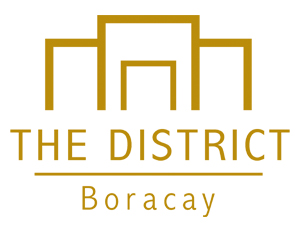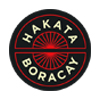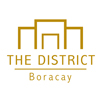Sustainability
THE DISTRICT BORACAY SUSTAINABLE PRACTICES
The District Boracay takes pride in its eco-practices which supports the world-wide call for sustainable tourism. Various conservation and preservation practices are woven into the resort’s core values to ensure sustainable operations and growth not just for the property but for the local community as well.
Upholding its commitment towards the “green movement”, The District Boracay’s involvement in this global cause comprises of wide range of projects such as use of solar power as main source of energy and other recyclable materials that will help offset its carbon footprint. Below is the complete list of ecological endeavours of the resort:
Switch to Solar Power
The District Boracay is proud to be the one of the few Philippine resorts to use solar power as its main source of electricity for the whole property. Through this, the resort reduces its dependency on fossil fuels thereby reducing harmful greenhouse gas emissions. Aside from the savings on electricity cost, the resort’s switch to use of renewable energy helps in mitigating global warming.
Recyclables in lieu of Disposables
Plastics take years to decompose, and sadly end up in landfills or in ocean waters when not disposed properly. Due to its harmful threat to the environment, the resort uses environment-friendly refillable water bottle in guest rooms in lieu of disposable plastic bottles. Through this, the resort was able to reduce the use of plastics and also its non-recyclable wastes.
Sewage Treatment Plant Facility
The hotel has its own Sewage Treatment Plant that is connected to the central sewerage system of Boracay Island. This ensures that all hotel wastes are disposed off properly and in accordance with the Philippine Department of Environment and Natural Resources’ (DENR) requirements and operational guidelines for hotels in Boracay.
Clean-up Drives
Keeping a clean beach is important not only for humans but for marine inhabitants as well. The resort organizes an annual Coastal Clean-Up Activity for staff and guests to join and do their share in the preservation of the island. The resort also supports various international and local green initiatives (like International Coastal Clean-Up Day, Earth Day, Earth Hour, etc.) and actively participates in their activities. Aside from this, the resort maintains a team that is tasked to keep the beach in front of the property clean at all times.
Tree Planting Activities
The hotel also ensures to organize annual tree planting activity in deforested areas in nearby towns, participated by staff and management. This is an enriching activity for the whole team which also provides a great opportunity to fulfill our social responsibility to offset the hotel’s carbon footprint.
Waterless Urinal (for Public CR)
The installation of water-free urinal system in the resort’s common toilets help conserve an average of 150,000 liters of fresh water a year. Using these waterless urinals also contribute to energy conservation, as it reduces the need to pump water across the whole property.
Dual-Flush Toilets (in Guest Rooms)
The dual-flush toilets installed in guest rooms are designed to help regulate the water being used by guests. These kind of toilets have two buttons – a bigger one which uses a minimum of 6 liters of water every use (meant for solid wastes), and a smaller one which uses 3 liters of water per use (meant for liquid wastes).
Hydro-Culture Potted Plants in Rooms
Indoor plants liven up a room and are natural air purifiers. Each guest room comes with a decorative hydro-culture plant. These type of plants require little amount of water to sustain its growth. The resort almost never uses pesticides for the plant which are considered toxic in the air due to their higher pest resistance.
Energy Saving Device
All rooms at the resort are equipped with energy saving device to automatically shut off all lights, outlets and electronic appliances. This reduces the chance of energy waste in each guest rooms when the room is unoccupied.
“We Love Boracay”
In support to the local government’s advocacy in responsible tourism, The District Boracay displays the “We Love Boracay” signage in each guest rooms and at the beach area to remind the guests of all the local ordinances and also to encourage them to be a responsible traveller.
Local Employment
The resort employs local people around the region which makes up for 70% of the whole the property’s workforce. The District Boracay fosters local involvement so employees can work closer to home and their families. Local employment also reduces the environmental impact of commuting.
Eco-basket
Instead of disposable plastics, the resort uses eco-basket for guests’ laundry items. Plastics take hundreds of years to decompose and completely eliminating the use of it will lessen the chance of it ending up in the water and coral reefs.
LED lights and Inverter Air Conditioner
The use of LED lights in guest rooms and offices can greatly reduce waste and save energy since these lights last longer than other lighting source and consume less energy than incandescent or fluorescent lights. The District Boracay also uses inverter air conditioner, a highly energy-efficient appliance. Most importantly, this kind of air conditioner emits less carbon dioxide, a harmful gas.
Eco-friendly cleaning solutions
The resort uses eco-friendly cleaning solutions to minimize the use of toxic substances and to also reduce the environmental harm caused by the manufacture, use and disposal of the toxins. Theses can also improve the air quality with the natural scent of the ingredients used in the solution.
Eco-friendly room amenities
Each of the resort’s guest rooms have a complete set of eco-friendly room amenities, from shampoo to body wash. All amenities are made of natural ingredients and also feature eco-friendly packaging to ensure that these items can be recycled or has no harmful environmental effect. Patronizing these kind of products will greatly reduce the resort’s (and the guests’) carbon footprint.










